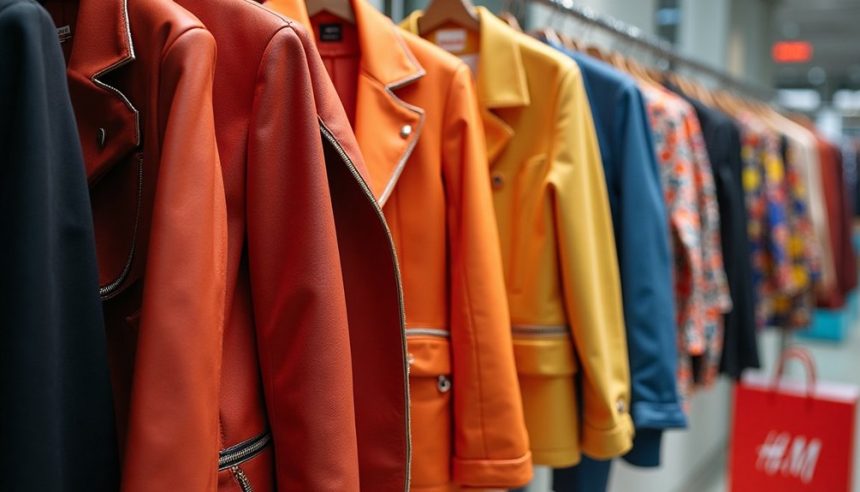When I think about the choice between Zara and H&M, I can’t help but weigh their distinct offerings. Zara’s high-fashion aesthetic draws me in with its quality, while H&M’s budget-friendly basics keep me grounded. Each brand has its appeal, but I find myself asking which one truly fits my style and values. Let’s explore what sets them apart and see which might be the better option for you.
Key Takeaways
- Zara offers higher-quality fabrics and trendier designs, making it suitable for special occasions and stylish statement pieces.
- H&M provides more affordable basics and everyday casual wear, appealing to budget-conscious shoppers looking for practicality.
- While Zara’s pricing reflects its premium quality, H&M is more accessible, with frequent discounts and low-cost options.
- For sustainability, both brands are improving; Zara focuses on recycling, while H&M commits to eco-friendly materials by 2030.
- Consider your personal style, budget, and occasion to determine which brand aligns best with your fashion needs.
Brand Overview
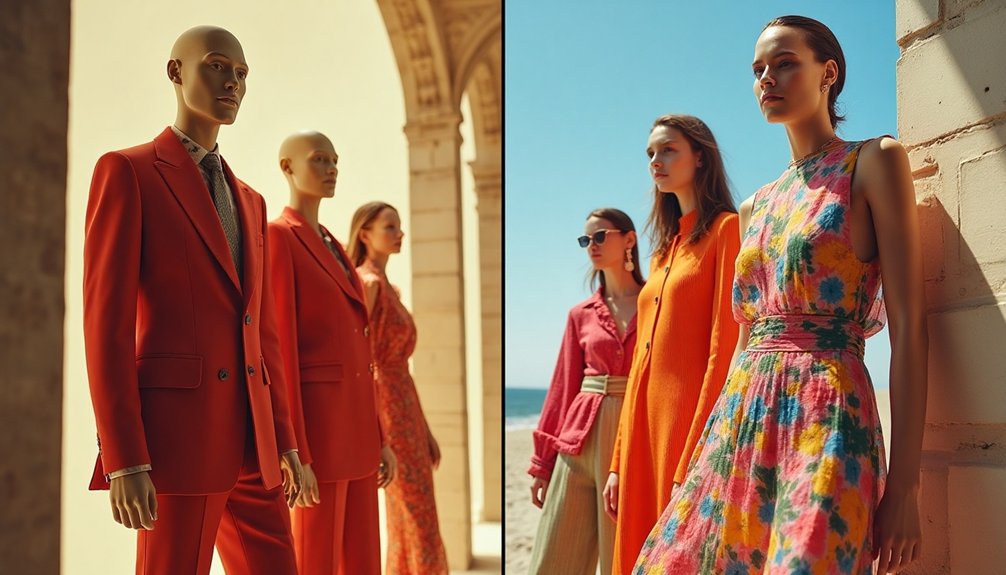
When you think about fast fashion, two names often come to mind: Zara and H&M.
I’ve found that both brands offer trendy styles at affordable prices, but they each have unique identities. Zara leans towards high-fashion vibes, often updating its collections in rapid cycles, which keeps the offerings fresh and exciting.
On the other hand, H&M provides a broader range of casual wear and basics, appealing to a more mainstream audience.
I appreciate how Zara often feels like a playful experiment in fashion, while H&M emphasizes accessibility.
Both brands cater to a youthful crowd eager for the latest trends, but their execution and overall experience differ. Understanding these distinctions really helps when deciding which brand aligns with your personal style.
Quality of Materials
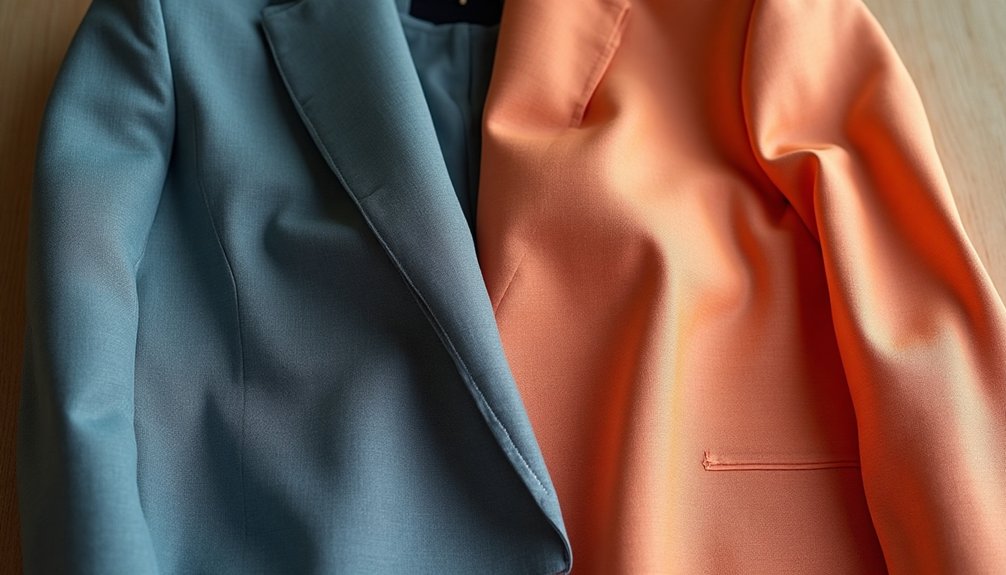
When I compare Zara and H&M, the quality of materials really stands out as a key factor.
I’ve noticed differences in fabric composition that can affect how garments feel and last over time.
Let’s explore how each brand measures up in terms of durability and longevity.
Fabric Composition Comparison
While both Zara and H&M offer trendy clothing at accessible prices, their fabric compositions reveal distinct approaches to quality.
I’ve noticed that Zara often uses a blend of materials like cotton, polyester, and elastane, which gives their pieces a more polished feel. It’s especially evident in their fitted styles that emphasize structure.
On the other hand, H&M tends to feature more cotton-heavy garments but may incorporate cheaper synthetic fibers, which can sometimes lead to a less luxurious touch.
When I compare the two, Zara feels a bit more upscale, while H&M’s fabric selection often prioritizes affordability.
Ultimately, my choice hinges on whether I want that refined look or a budget-friendly option for everyday wear.
Durability and Longevity Analysis
Although both Zara and H&M aim to deliver stylish choices, I’ve found that the durability and longevity of their pieces can significantly differ due to the quality of materials used.
Zara tends to utilize higher-quality fabrics, giving their clothes a more substantial feel. I’ve noticed that items like their blazers and dresses hold up better over time, resisting wear and tear.
In contrast, H&M’s offerings often feel flimsier with less resilience. While their prices can be appealing, I’ve experienced quicker fading and fraying in several pieces.
In my wardrobe, I prioritize versatility, and investing in Zara pays off since I can wear their clothes repeatedly without worrying about losing shape or color.
Pricing Strategies
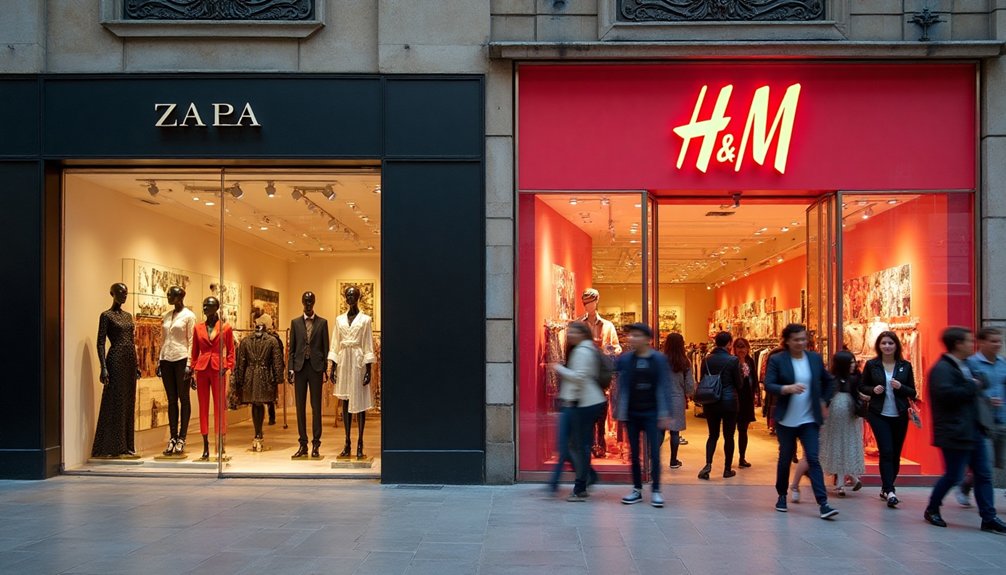
When comparing Zara and H&M, pricing strategies play a crucial role in their appeal.
I find it interesting how their price points differ, impacting customer perception and sales.
Let’s also look at their discount policies to see how they attract shoppers and manage inventory.
Price Point Comparison
As I dive into the price point comparison between Zara and H&M, it’s clear that their pricing strategies reflect their brand identities and target markets.
Zara positions itself as a more premium brand, with prices generally higher than H&M’s. This aligns with Zara’s focus on high-quality materials and trendy designs that cater to fashion-forward consumers.
On the other hand, H&M adopts a more accessible price range, appealing to budget-conscious shoppers seeking stylish yet affordable clothing.
While Zara’s pricing can sometimes feel like an investment, H&M offers frequent low-cost options that make it easier for everyone to keep their wardrobe fresh.
Ultimately, your choice depends on whether you’re aiming for quality or quantity in your shopping experience.
Discount Policies Analysis
While considering their overall pricing strategies, examining the discount policies of Zara and H&M provides valuable insight into how each brand attracts and retains customers.
Zara tends to stick with its original prices longer, rarely offering significant discounts. Instead, they focus on limited-time collections, which creates urgency among shoppers. This strategy gives the impression of exclusivity, making customers feel special when they purchase items.
On the other hand, H&M frequently offers sales and seasonal discounts. You’ll often find promotions that encourage bulk buying, which can make shopping more enticing.
Ultimately, if you appreciate exclusive pieces and fewer markdowns, Zara might be your choice, whereas if you love a good deal, H&M’s discounts could be worth it for you.
Trend and Style Analysis
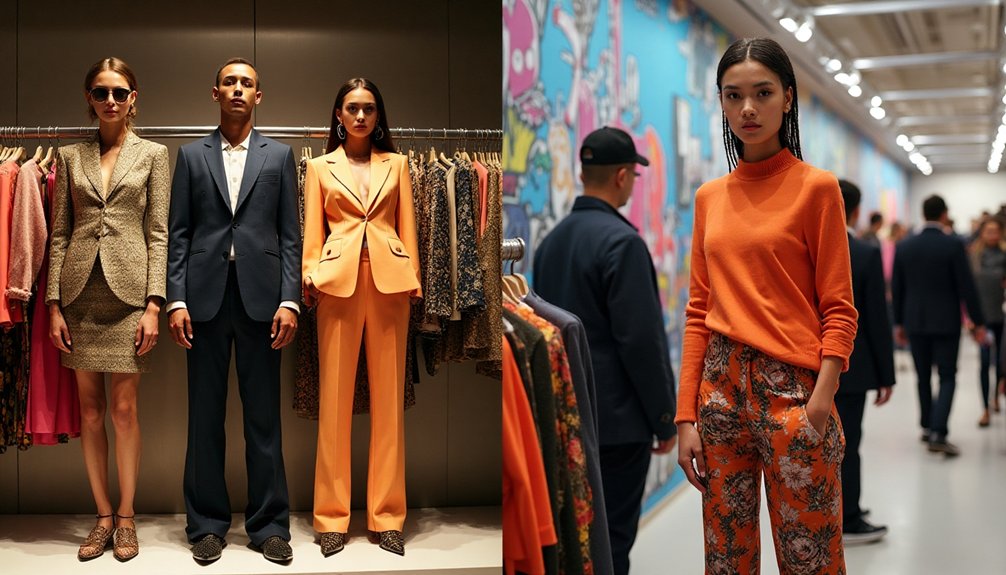
Though both Zara and H&M aim to deliver stylish and affordable fashion, their approaches to trends and style reveal distinct characteristics that set them apart.
Zara tends to focus on high-fashion looks, often drawing inspiration from runway collections. When I shop there, I notice limited collections that change rapidly, which makes the fashion feel exclusive.
On the other hand, H&M emphasizes mainstream trends and everyday wear, showcasing a broader range of styles. I find that their pieces are often more casual and versatile, appealing to a wider audience.
While Zara’s garments can feel more sophisticated, H&M offers practicality.
Ultimately, my choice depends on whether I’m looking for something trendy and chic or more casual and wearable.
Product Range and Availability
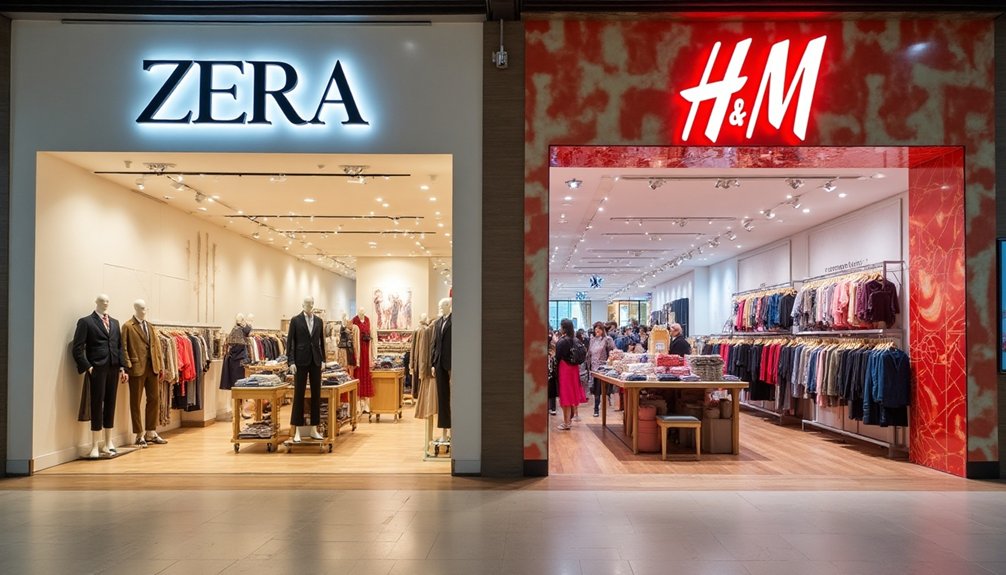
After exploring how Zara and H&M approach trends and style, it’s clear that these brands also differ significantly in terms of product range and availability.
Zara tends to focus on a more curated selection, offering fewer pieces that often feel more exclusive. This strategy means that once something sells out, it can be challenging to find a replacement.
On the other hand, H&M boasts a broader range of products, from basics to trendy items, making it easier for shoppers to find what they need. Plus, H&M tends to restock items more frequently, ensuring greater availability.
In my experience, if you’re looking for variety and easier access, H&M is likely the better choice, while Zara shines in exclusivity and high-fashion designs.
Sustainability Practices
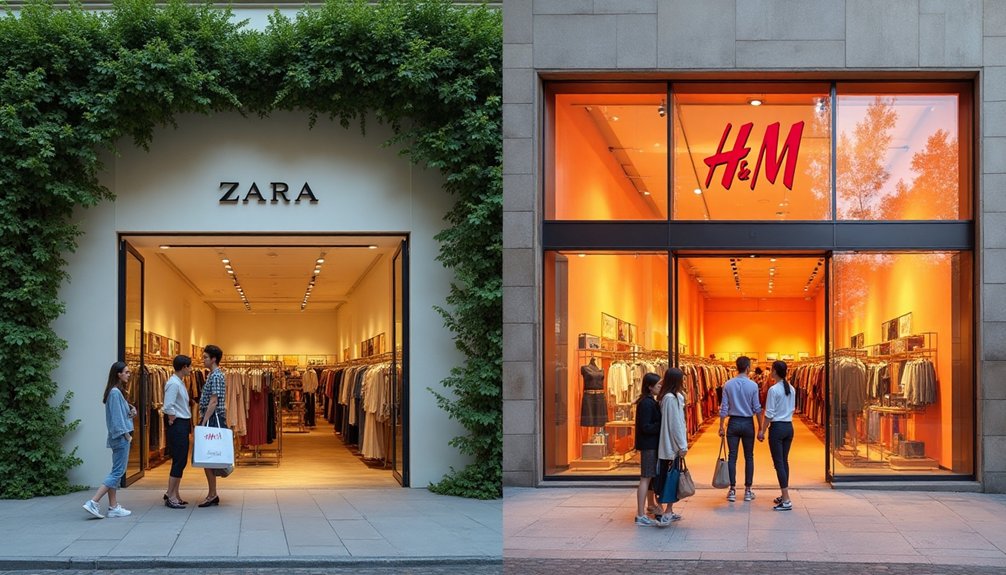
As I dive into the sustainability practices of Zara and H&M, it’s evident that both brands are taking steps toward more eco-friendly operations, but their approaches vary significantly.
Zara focuses on a closed-loop model, aiming to create recyclable clothing and reduce textile waste. Their “Closing the Loop” program encourages customers to recycle old garments in-store.
On the other hand, H&M emphasizes sustainable materials, pledging that by 2030, all their cotton, linen, and polyester will come from more sustainable sources. They’ve also introduced a garment collection initiative, allowing shoppers to donate used clothing.
While both brands are making commendable efforts, I can’t help but feel that H&M’s commitment to sustainable materials might resonate more with environmentally conscious consumers.
Customer Experience and Shopping Environment
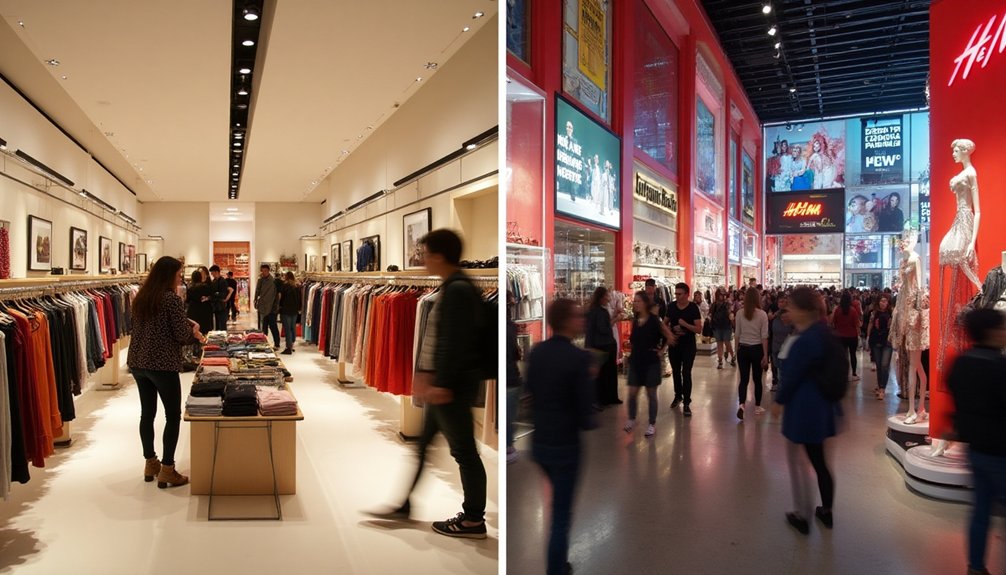
When I step into a Zara or H&M store, I notice distinct atmospheres that cater to different shopping experiences.
Zara feels upscale and polished, with sleek displays and a minimalist design that makes each piece stand out. The lighting is soft yet focused, creating an inviting space where I can easily browse.
On the other hand, H&M provides a more vibrant, casual vibe. The store layout is colorful and energetic, encouraging me to explore various sections without feeling overwhelmed. I appreciate H&M’s approachable prices, which invite me to try new styles without the guilt.
Final Verdict: Which Brand Is Right for You?
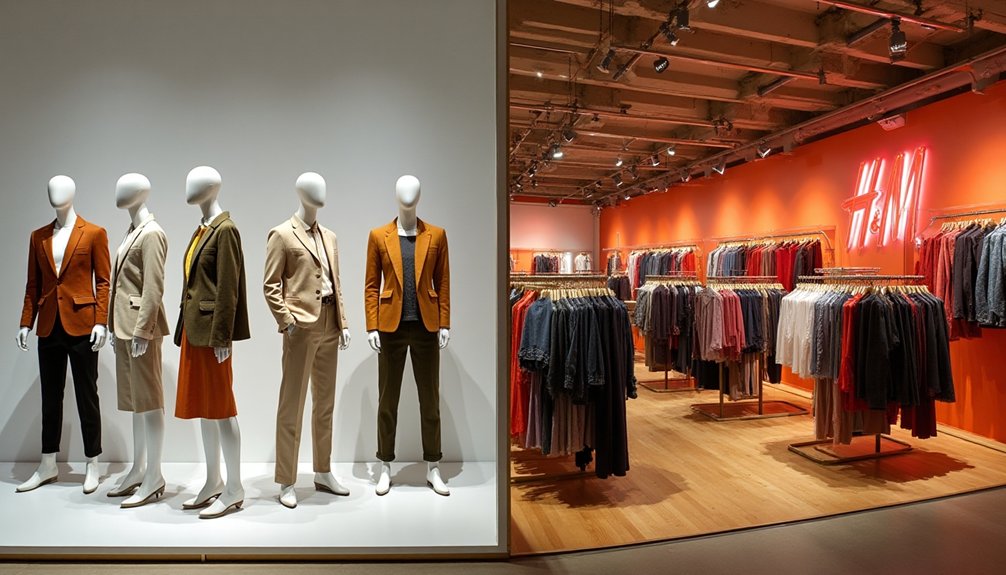
So, which brand is right for you—Zara or H&M? It really depends on what you’re after.
If you value trendy styles and don’t mind spending a little extra for quality, Zara’s your pick. Their fashion-forward pieces are perfect for those special occasions when you want to stand out.
On the other hand, if you want affordability and versatile basics, H&M’s got you covered. Their wide range of everyday wear suits various styles and budgets.
Personally, I lean towards H&M for casual outfits but splurge on Zara for standout pieces.
Ultimately, your choice should reflect your lifestyle, budget, and fashion preferences. Consider what you value more and go from there—both brands have something unique to offer.
Conclusion
In the end, your choice between Zara and H&M really boils down to what you value most in your wardrobe. If you’re after standout, high-fashion pieces and don’t mind spending a bit more, Zara’s the way to go. But if you’re looking for stylish, budget-friendly basics for everyday wear, H&M has your back. Consider your personal style, shopping habits, and values before making your decision, and you can’t go wrong!




